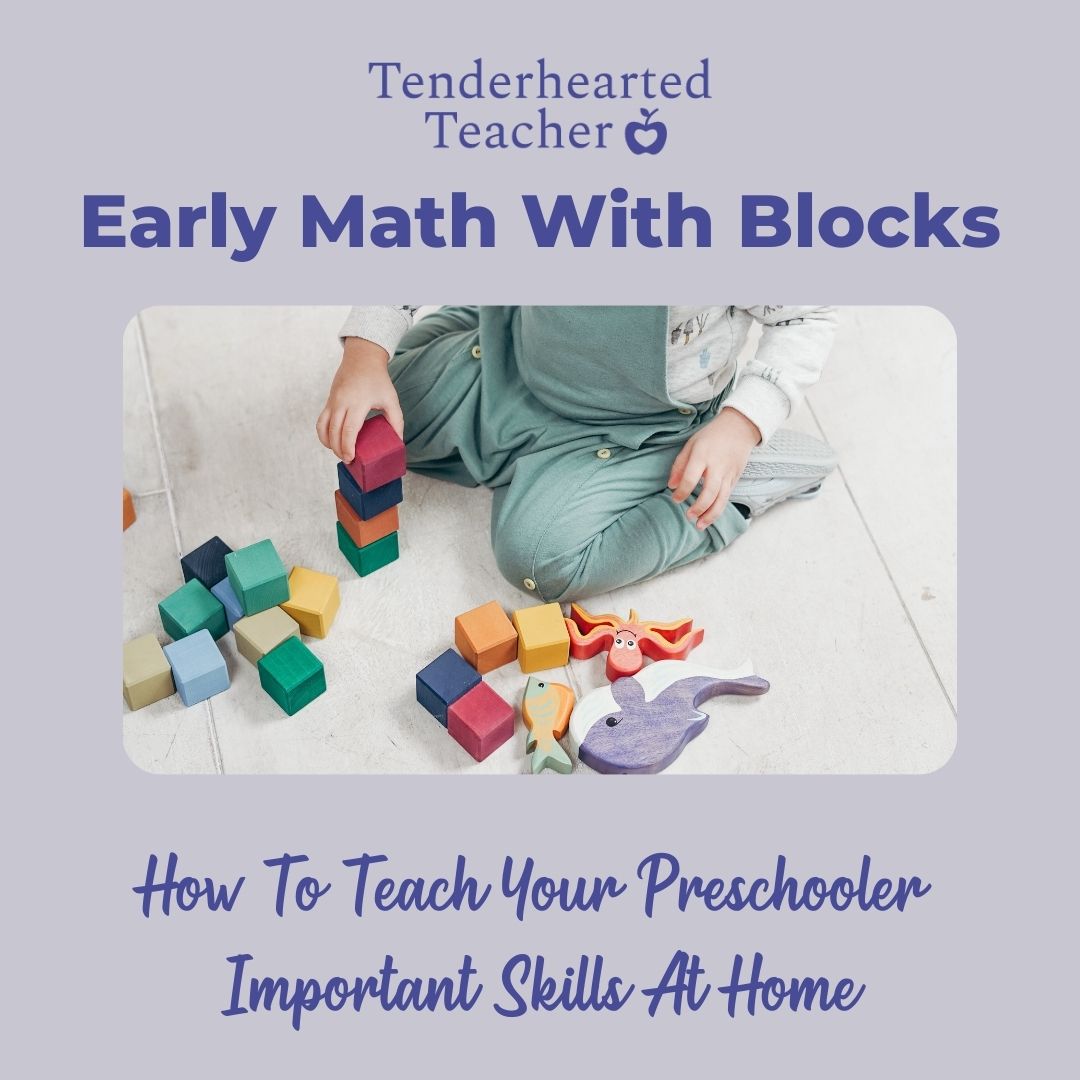
Please note: This post contains affiliate links. As an Amazon Associate I earn from qualifying purchases. Therefore, if you buy something through these links I will receive a small commission at no extra cost to you. Thank you for your support.
Did you know you’re probably teaching your preschooler about math at home every day without even realizing it? Think about mealtime, for example. You’re exposing them to measurement when you add different amounts of ingredients to your sauce pan. Or perhaps you’re counting the number of plates, utensils, and cups you’ll need to set the table. Regardless of the scenario these are great natural opportunities to teach your child important mathematical concepts. But, I’m going to share a fun way to teach multiple math skills at home more deliberately. Believe it or not, your preschooler can learn loads of early math with their blocks during playtime.
First, Let’s Chat About Math in Preschool…
High-quality preschool programs enhance the academic and social-emotional skills of young children by providing opportunities to learn through play and exploration. These early skills are important as children grow and they set the foundation for future learning.
But, what constitutes early math? Depending on where you live your home state determines the learning standards for its students. These standards provide teachers with a framework of the skills and concepts children should learn and when this learning should occur, i.e. grade level. For example, the New Jersey Preschool Teaching and Learning Standards list four overarching goals for math in PreK, which are:
- 4.1: Children begin to demonstrate an understanding of numbers and counting.
- 4.2: Children demonstrate an initial understanding of numerical operations.
- 4.3: Children begin to conceptualize measurable attributes of objects and how to measure them.
- 4.4: Children develop spatial and geometric sense.
Standards are then broken down further with specific learning outcomes. Let’s consider numbers and counting. A few possible learning outcomes under this category would be “children will count to 20 with minimal prompting,” and “children will name 1 digit numbers up to 10 with minimal prompting,” etc.
Regardless of where you live most preschool programs will follow similar standards. Generally, they will emphasize number sense (such as counting and quantities,) numerical operations (like addition and subtraction,) measurement (i.e. comparison and measurable attributes) and finally, geometry (more specifically shapes and spatial sense.)
With that said, it’s important for teachers and caregivers to understand the state standards, and their respective outcomes, so they can adequately provide hands-on and age-appropriate learning experiences.
Well Then How Do You Teach Math With Blocks at Home?
There have been studies that suggest babies are born with a certain amount of innate mathematical knowledge– which let’s face it, is pretty amazing. But even with that, it’s still necessary to cultivate and enhance this natural awareness through purposeful play. In fact, I find a classic toy–that can be found in many homes and early childhood classrooms alike– is perfect for teaching math.
What Type of Math Can a Child Learn With Blocks?
Blocks are a fantastic way to let children explore mathematical concepts through play. They are excellent tools for teaching multiple skills like counting, measuring, comparing, sorting, and patterning, to name a few. Before I give you my suggestions, I should note that there is no need to practice all of these skills at once. These recommendations are meant a be a guide in teaching you to be more intentional in your math play with blocks.
Here are some examples of the ways I teach math at home and in my classroom. I’ve included images to demonstrate the different uses.
Numbers (Counting and Quantities)
- Children count the number of blocks they use to build a structure.
- Ask your child to count the blocks as they build or have them count the total after it’s completed. Ex: “How many blocks can you count? This tower has 5 blocks.”
- Children match sets using quantities.
- You can write a numeral or provide a number flash card. Then ask your child to match the corresponding amount of blocks to the number you’ve given them.
- Children compare quantities (the amount of blocks) in different groups using words like more, less, and same.
- For example, “This group has 4 blocks. This one has 5. Which has more? Which has less?”
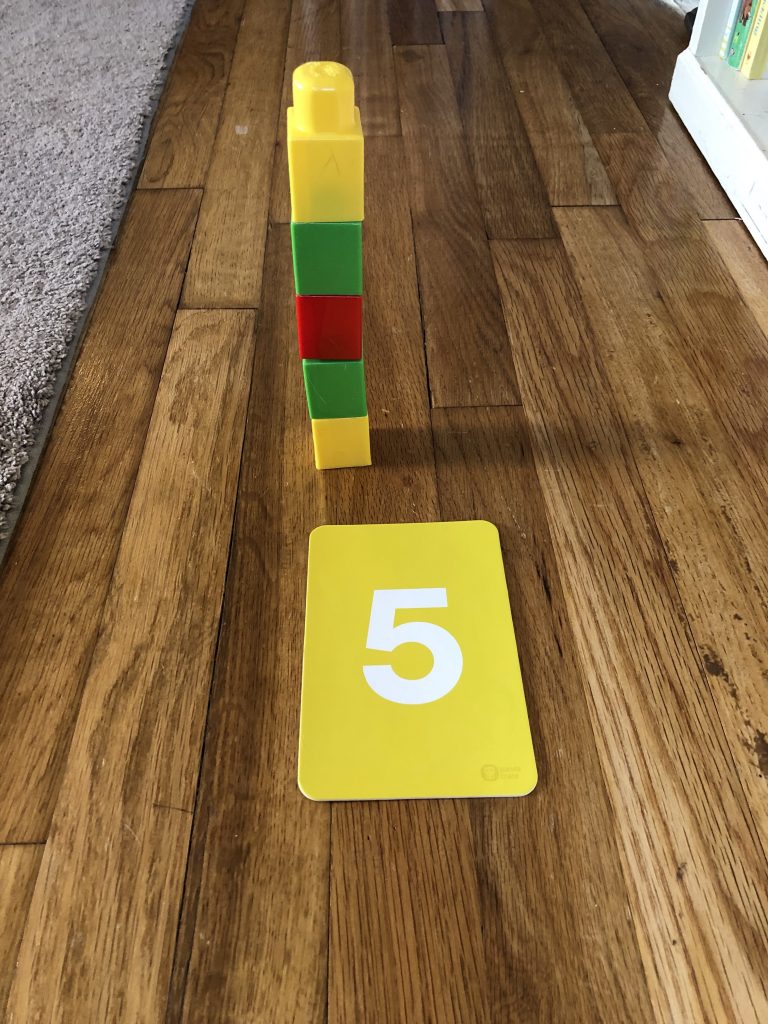
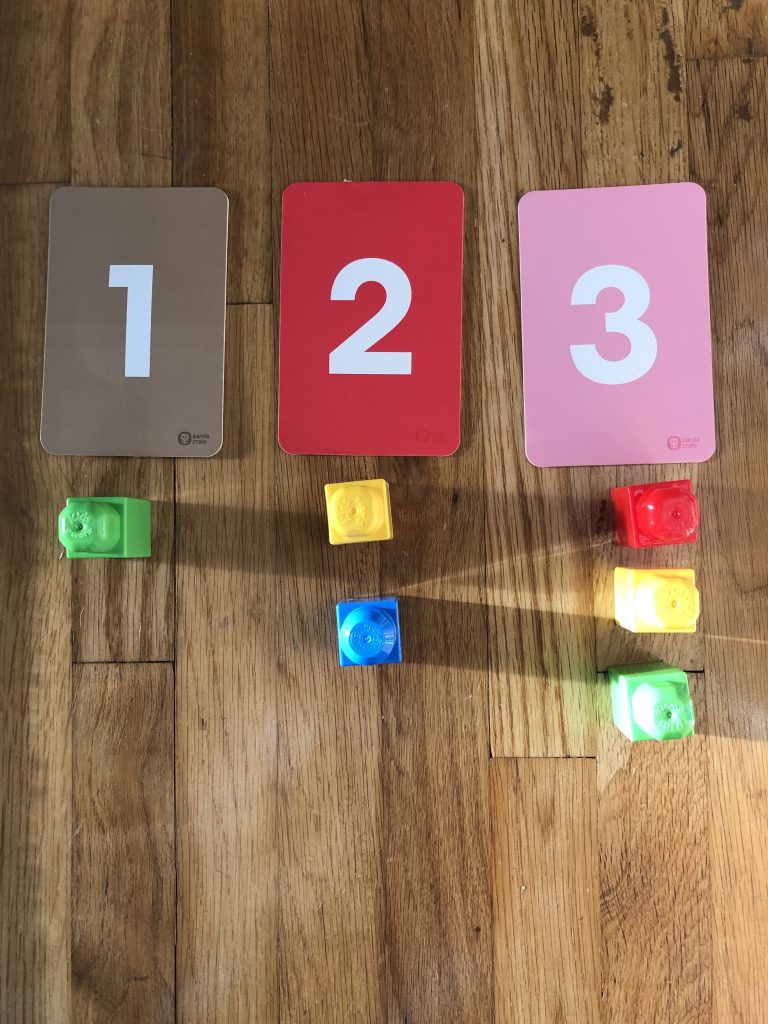
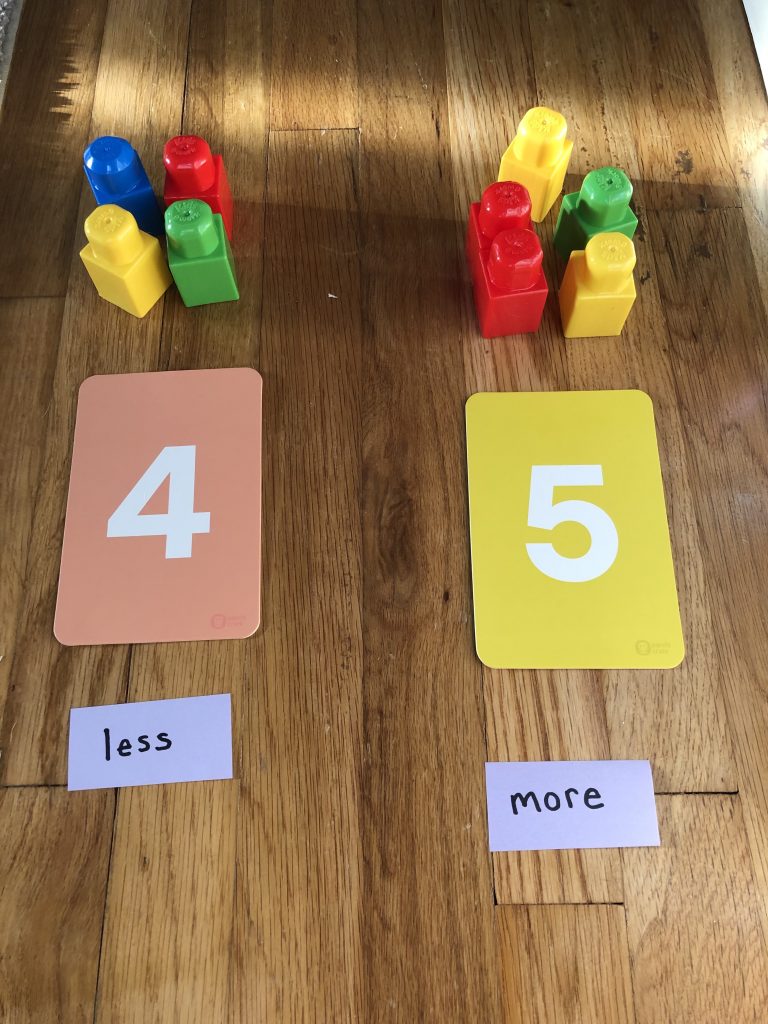
Numerical Operations (Addition and Subtraction)
- Children practice addition when they put pieces together.
- Have your child count the number of blocks with you as they are added to the structure. Ex. “We had 2 and we added 1 more. Now we have 3 altogether.”
- Children practice subtraction when they take structures apart.
- Have your child count the number of blocks as they are taken away or apart. Ex. “We had 4 blocks and we took 1 away. Now we are left with 3.”
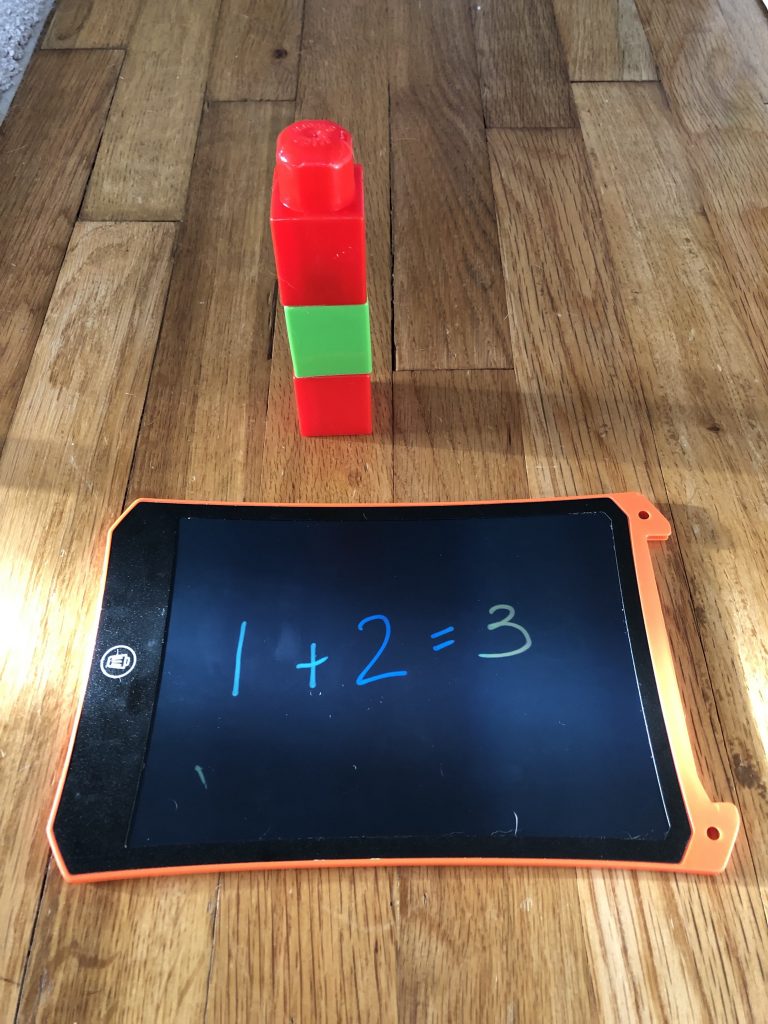
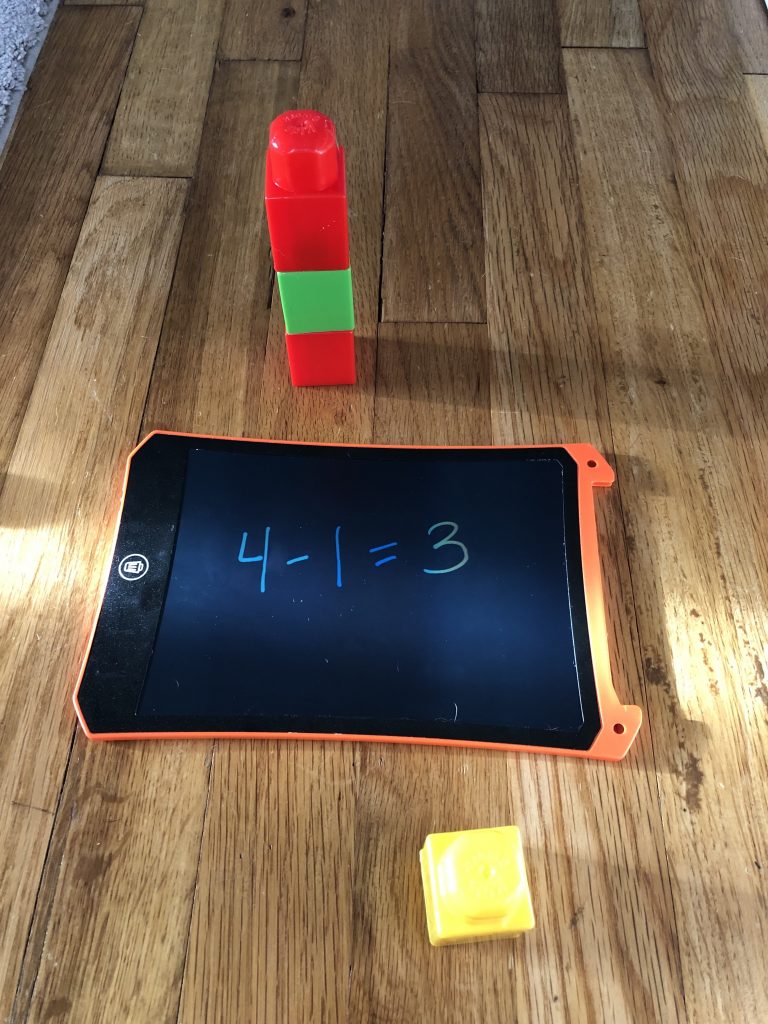
Measurement and Measurable Attributes (Sort, Pattern, Compare, Measure)
- Children sort blocks by size and color.
- Use colored plates, bowls, or sheets of construction paper and have your child sort the blocks by the corresponding color. Or if you’re using various sizes of blocks, your child can sort them into different-sized containers, i.e. small, medium, and big.
- .Children create basic patterns.
- Have your child create simple patterns with their blocks such as AABB, ABAB, ABC, etc.
- Describe different block structures using comparison words.
- Talk with your child about the block structures’ measurable attributes: “This block tower is tall and this one is short,” or “This block is long, but the other one is longer.”
- Use blocks for standard and non-standard measurements.
- Standard measurements: using a ruler or tape measure to measure individual blocks or structures themselves.
- Non-standard measurements: using blocks to measure other toys or objects, i.e. “the teddy bear is 7 blocks tall.”
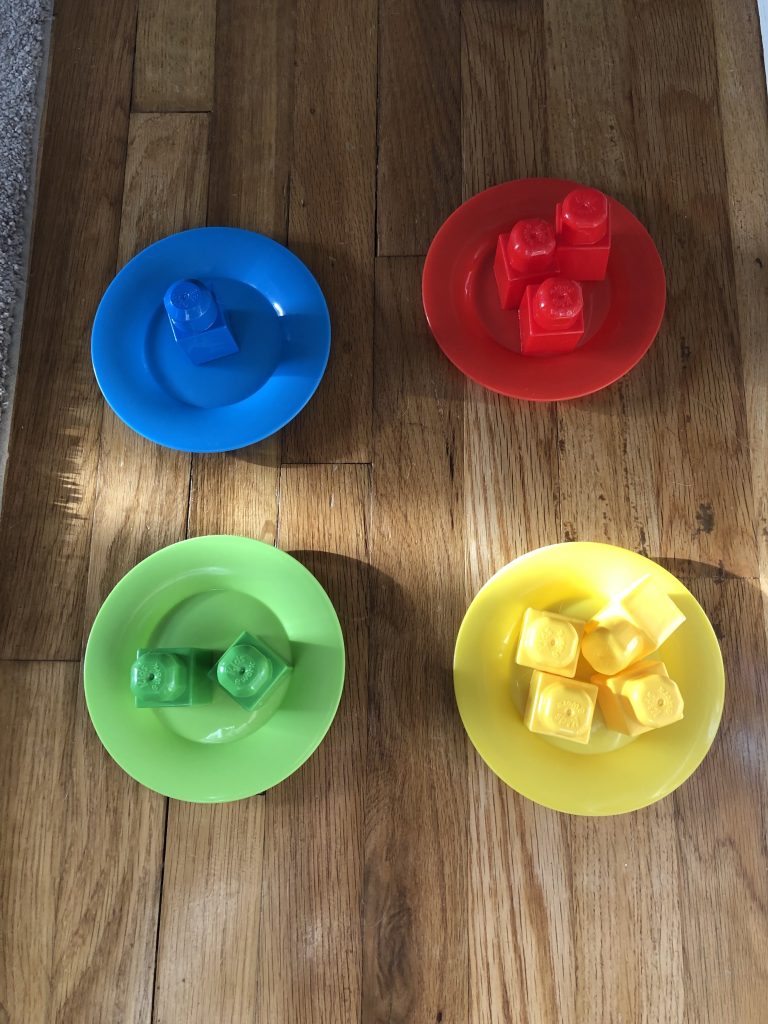
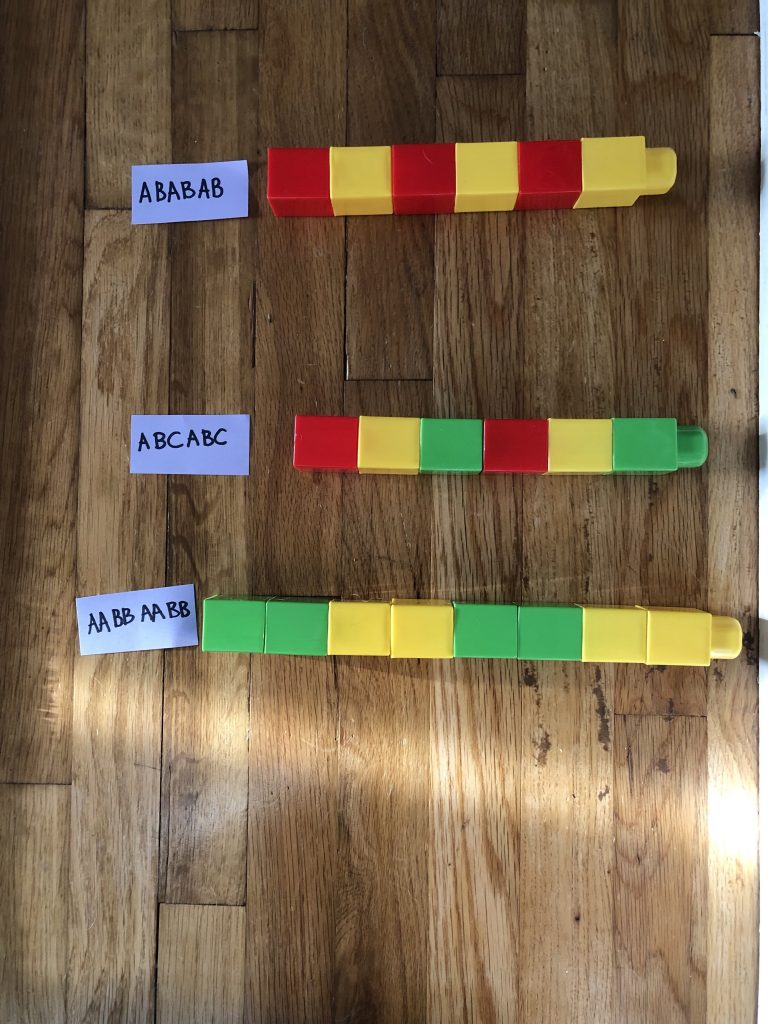
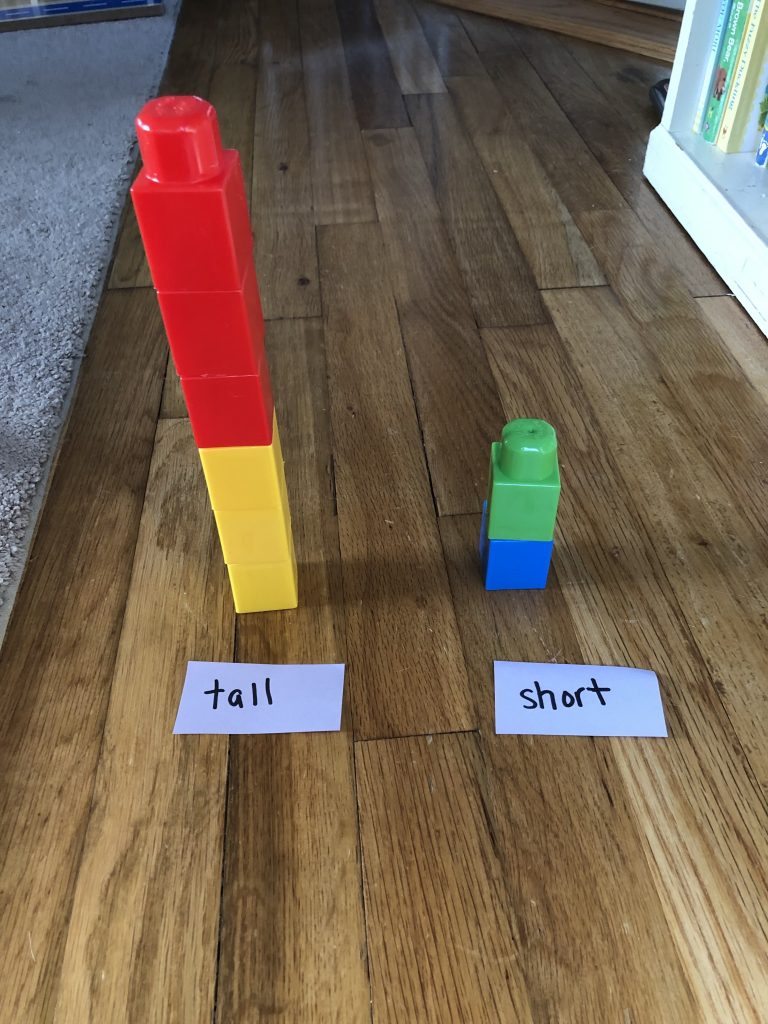
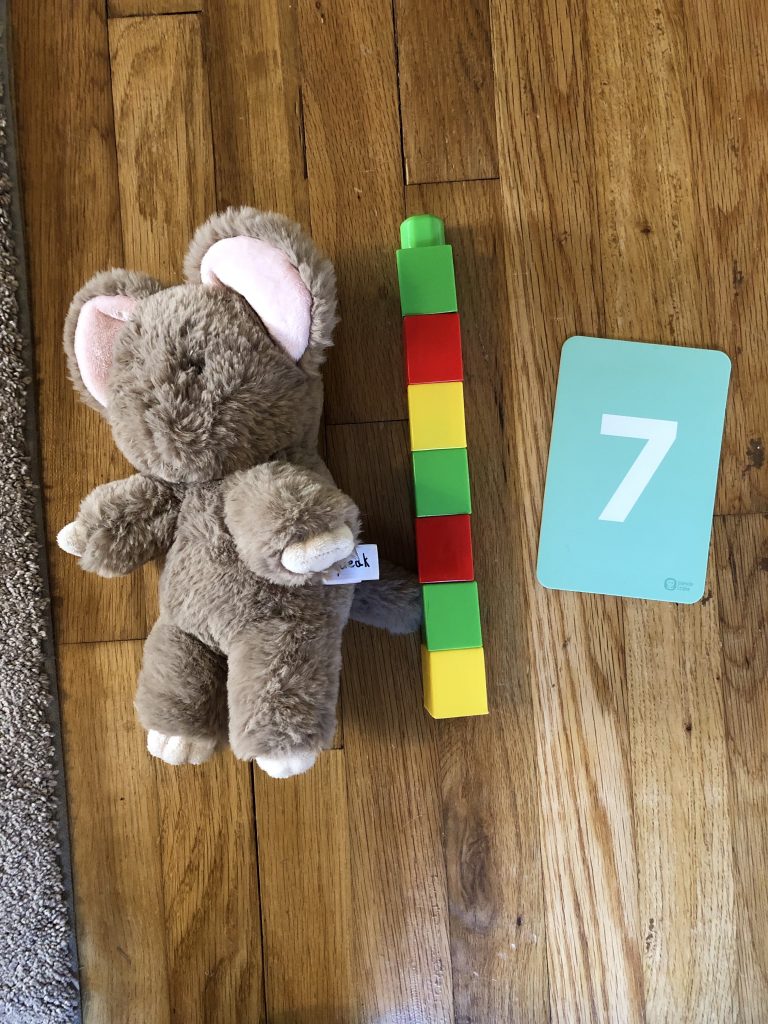
Spatial Sense (Shape ID, Shape Creation, Positional Words)
- Create and name shapes by manipulating and configuring the blocks.
- Have your child build block structures to make various shapes like rectangles, squares, and triangles, etc.
- Develop spatial sense by practicing positional words.
- Put the blocks in various positions and have your child tell you where the blocks are, ie. over, under, in between, behind, etc.
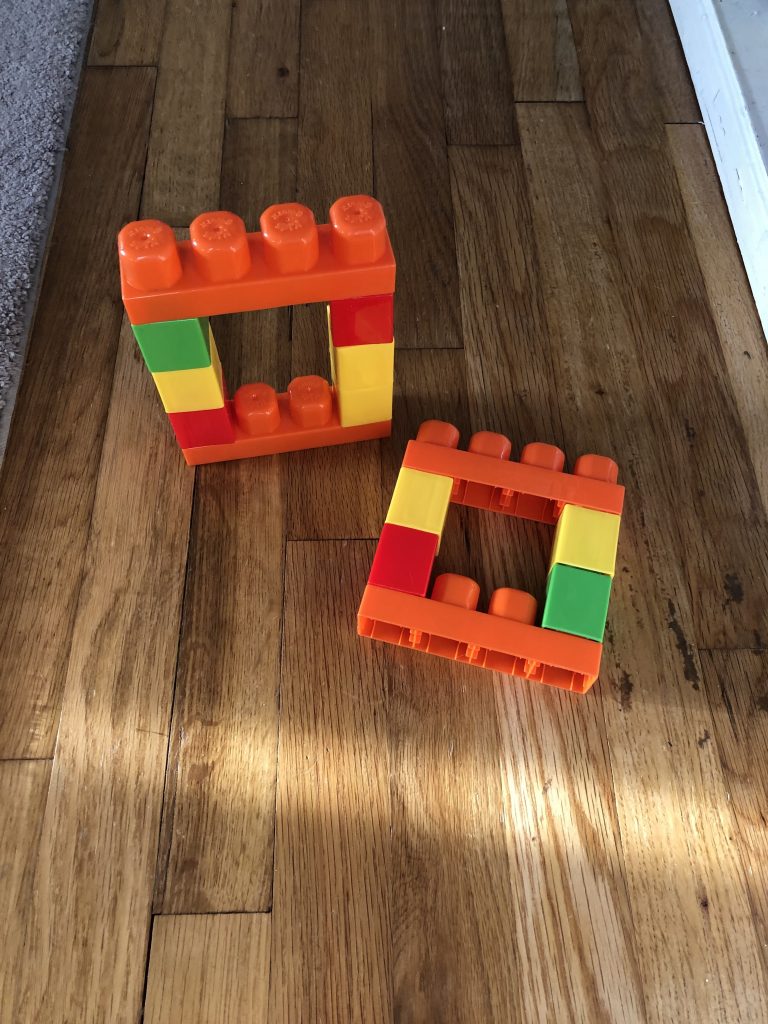
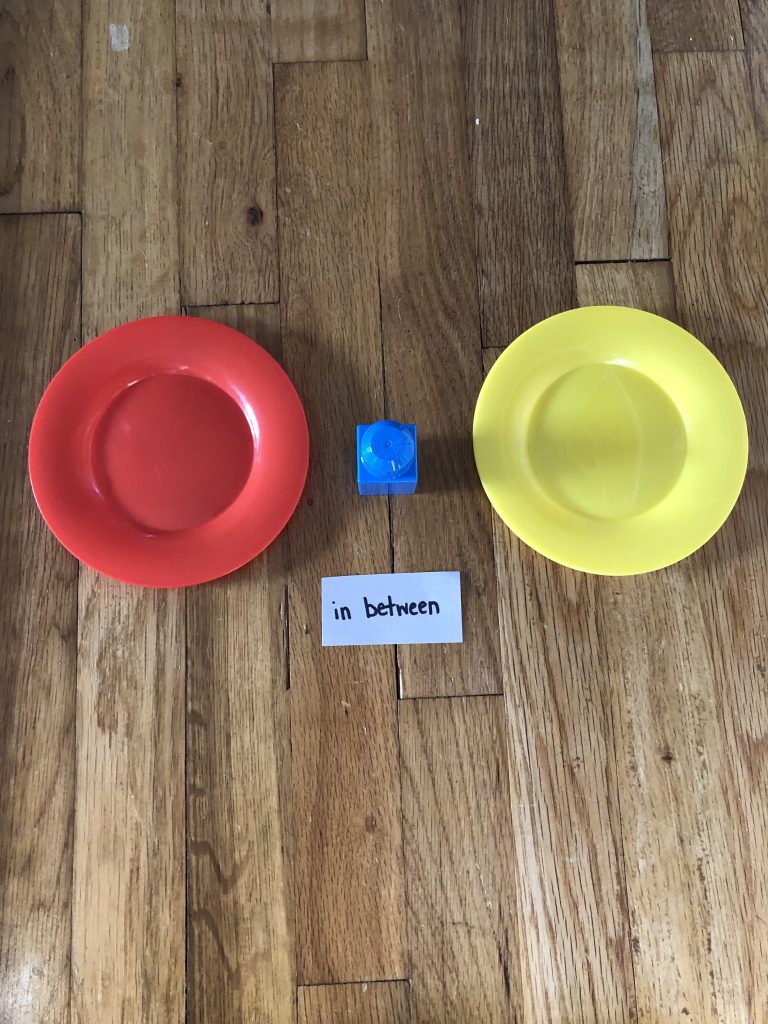
Math with Blocks is Not Only Fun, but It’s Educational Too
We now know the value of blocks because they encourage academic learning, creativity, and open-ended play. In addition, they provide endless opportunities for engagement. (You can read more about the benefits of blocks right here.) Therefore, I want to share a few of my favorite blocks (wooden, bristle, large/mega, and foam)–should you want to add them to your play rotation.
- 200-piece wooden block set
- Assorted colors: red, yellow, blue, and green
- 9 different shapes; this product ships in its own special e-commerce packaging intended to be easier to open and reduce waste
- Sort them, stack them, knock them down!
- Promotes hand-eye coordination, color and shape recognition, counting and sorting, and spatial relationships.
- Official Battat Bristle blocks. Soft, rubbery, interlocking bristles on colorful toy blocks that connect together at any angle.
- 80 chunky pieces including wheels, spheres, and plenty other pieces. Powered by imagination, build and rebuild with 80 easy-to-connect blocks for toddlers.
- Sensory activity. Uplifting colors and different textures. Round edges and bristles, bumps, wheels and pyramids that tiny fingers will love to discover.
- Storage is included. Fit everything in the storage bin when your little one is done building. Easy to store and carry.
- Easy to clean. Just use warm soapy water and let air dry.
- Creative Development - Motivate young minds with this toddler-friendly assortment of LEGO DUPLO bricks and pieces. With endless hands-on creative possibilities, the developmental benefits are enormous
- Learning Through Play - Fuel imaginations with 85 colorful bricks including fun pieces, such as a window, car, and 1-2-3 number bricks. With such a versatile toy, kids will never stop playing and learning
- Toddler Development - With a modern design for the buildings, people and objects, it’s easy for parents and carers to share toddlers’ precious developmental milestones as they work together to build, create, and imagine
- Combine and Build - The colorful assortment of bricks, pieces, number and people are conveniently stored in a green storage box with a LEGO DUPLO style 8-stud lid. Combine with other DUPLO sets for even more fun
- Perfect Gift - With colorful bricks and pieces that are easy for small hands to pick up and place, this educational toddlers toy makes a great Christmas or birthday gift for toddlers aged 18+ months
- Building set comes with 80 big building blocks designed to be durable
- The #1 preschool building toy in the U.S.A.
- Includes 1 reusable storage bag for easy cleanup
- Blocks are compatible with all MEGA BLOKS building toys for endless learning fun
- Ideal for ages 1+, and endorsed by Fisher-Price, these blocks help to develop imagination and fine motor skills
- FEATURE PACKED - Turn bath time into fun time with these waterproof & floatable colorful foam blocks! Easily dry off your blocks with the included drip-dry bag. Includes a 11"x13" floating platform block for building both in & out of the bath. The included carry bag allows for neat & easy storage.
- HOURS OF IMAGINATIVE PLAY - Keep your kids busy for hours with these eye-catching colored blocks. These high-density foam blocks will last for years without breaking or wearing out. Set includes 140 pieces for the ultimate building experience.
- EDUCATIONAL TOYS - Strengthen & develop your toddler's motor skills & coordination while encouraging social interaction. Constructed in different shapes & sizes, these building blocks improve shape & color recognition while strengthening cognitive skills.
- SAFER ALTERNATIVE - Reduce the risk of bruising & injury with these non-toxic & BPA free foam blocks. The soft edges are a safer alternative than wooden & plastic options.
- 1 YEAR MANUFACTURER WARRANTY
Finally, if you want to learn more about how to use other items around your home to encourage meaningful play please read my post: Free Activities for Preschoolers at Home. In addition, if you want simple ways to encourage literacy learning at home, please download my Free Literacy Guide.
Now talk to me! What types of math activities do you like to do with your little one? Have you ever used blocks to teach math skills? Please share your comments or questions below.
Reference:
NJDOE. (2014). Preschool Teaching and Learning Standards. Retrieved November 30, 2021, from https://www.nj.gov/education/ece/guide/standards.pdf.
SAVE TO PINTEREST
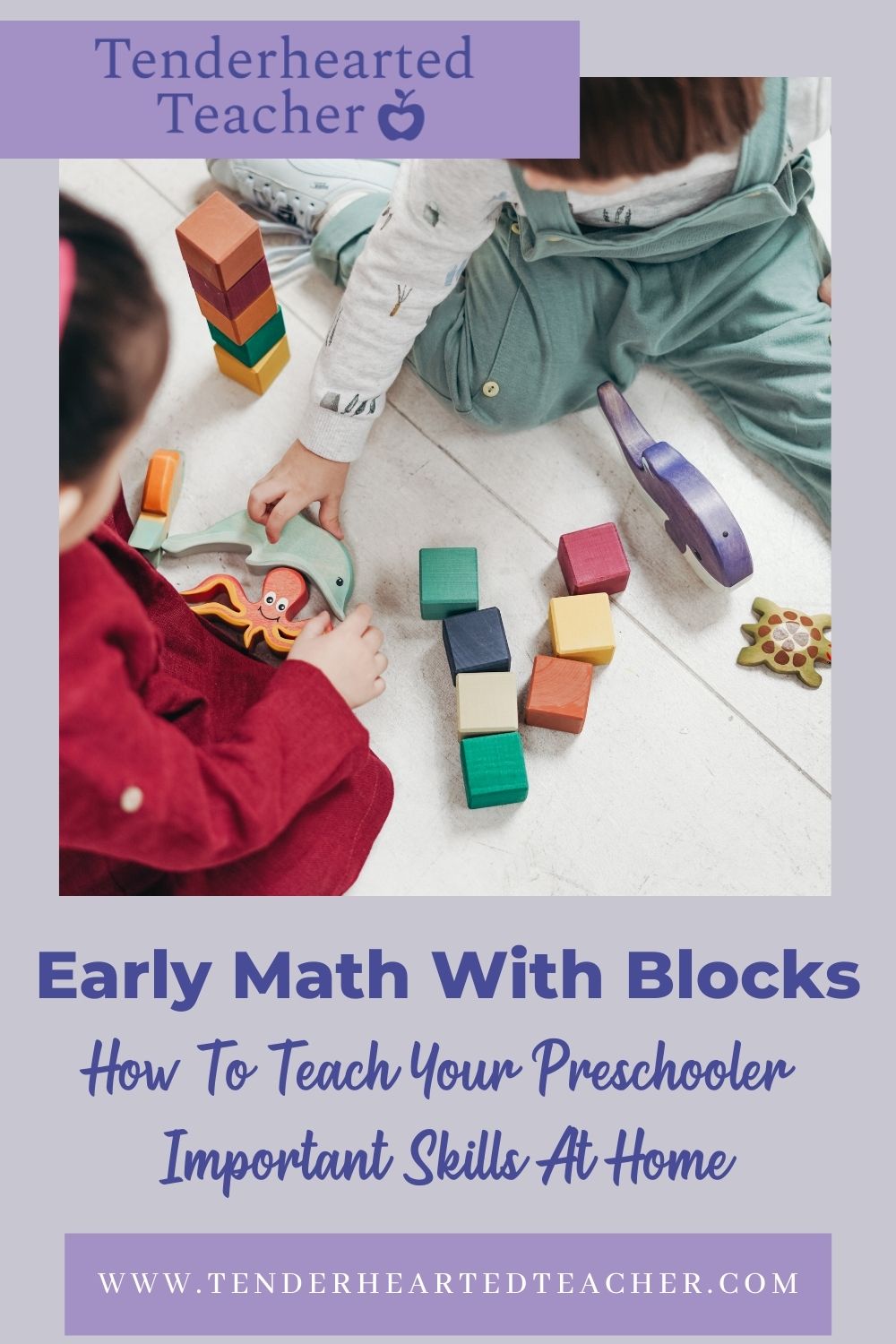





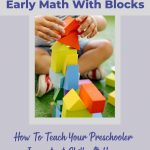
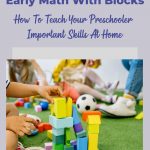

Great suggestions! Really insightful ideas.
Thank you Erin! I appreciate your comment.
These are great ideas. I had never thought before of teaching maths with blocks.
Thank you! I love to share resources on how to teach important concepts using things you already have in your homes! Here’s another post with more ideas: http://tenderheartedteacher.com/free-activities-for-preschoolers-at-home/
I love these suggestions! It’s a good reminder that we can teach our kids new things using items that we already have. Thanks for sharing!
Thanks so much Rachel! Here’s another post with more ideas for meaningful play with items already in your home: http://tenderheartedteacher.com/free-activities-for-preschoolers-at-home/
As a preschool teacher myself for 20+ years, I can attest to the fact that these are spot-on ideas for helping preschoolers learn math skills! I love your entire blog. I’ll be visiting again!
Thank you, Debbie! Your comment means so much to me especially because of your expertise! I’m so glad you’re enjoying the blog. Welcome to the Tenderhearted Teacher Community.
These are fabulous ideas for doing math with blocks! I’m a trained Montessori teacher and Math was my favorite area of the classroom because it’s just so cool. You can really turn anything into a math lesson. When my daughter was a toddler, she was really into playdough, so I made little play dough balls and we counted them together and did simple addition with them.
Thank you so much for your comment Dana! And yes, I completely agree. You can incorporate so many early math skills into playtime!
Love how you explain what each of these activities is teaching in terms of math concepts! It’s so easy to think that kids aren’t learning because they’re not “doing school” but nothing could be further from the truth. Great ideas!
You’re absolutely correct, Jenn. People often assume a young child isn’t learning through play, but it’s quite the opposite!
Thank you for these great tips! My little one still has time before she’s a pre-schooler but I feel that this will prepare me for this stage.
Thank you so much for your comment Ayanna. Yes, absolutely save these ideas so you can do them together in the future!
Love these! Hoping to homeschool and I get so lost! These simple ideas make it seem so much more do-able! Thank you!
Thanks so much for your comment Katie! I’m so glad you’ll be able to use these ideas!
Great post, loved all your ideas. I always love to teach my kids math with manipulatives , moreover they are also more of a visual learner 🙂
Informative post! I appreciate all your suggestions
I love blocks as they are so versatile. I will definitely use some of these activities next time we are playing with blocks.